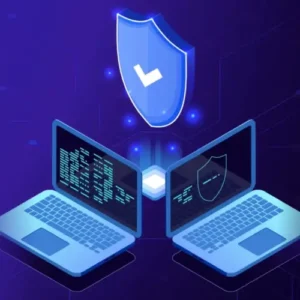Even though the telecoms sector makes an effort to simplify things for the general public (with sarcasm), this one seems to have slipped between the cracks.
Here’s what you need to know in a glance:
- Internet Protocol (IP)
- Voice Over Internet Protocol, or VoIP
- Session Initiation Protocol (SIP)
- Grouping – Trunking
Still, perplexed? Fortunately, we believe ourselves to be specialists in IP trunking and SIP trunking, so let’s discuss the differences.
Describe SIP trunking and VoIP
Session Initiated Protocol (SIP) is the set of “rules” needed to make VoIP conversations and connect multimedia sessions.
To put it simply, VoIP calls employ internet technology to facilitate voice calls.
What is the main distinction between VoIP and SIP?
VoIP can only transmit voice data over the internet; in contrast, a SIP trunk can transmit multimedia data packets. This can be in the form of voice, text, or video.
They work with many media as well
VoIP calls only take place online or over a secure internal network.
However, a SIP trunk can be carry data packets over any network, including the internet, a VPN, and the ISDN (physical phone network).
One of the key effects of this distinction is that SIP equipment may operate independently
In contrast to VoIP equipment, which depends on a computer to run its software and connections.
SIP trunking is a component of the network that you use to make and receive calls.
The protocol is kept on the network provider’s equipment and in the phone exchange you will have in your building.
If you handle critical data, you can even have a direct link to your network provider for an additional layer of security.
On the other hand, VoIP calls are all managed from a single location by a different supplier who manages the traffic.
That is not only less secure, but it also means that you won’t be able to make calls if their system goes down.
VoIP and SIP
Let’s dissect SIP and VoIP into their simplest concepts in order to better comprehend their differences.
Describe VoIP
Any phone call done through the internet as opposed to a traditional phone line is referred to by this general phrase.
As a result, VoIP relies on data communication rather than the traditional PSTN (public switched telephone network).
VoIP stands for “Internet Protocol,” which is a general word describes data being exchanged over the internet, as we mentioned above.
The term VoIP is more frequently refer to this when it refers to voice data.
VoIP is a term describes a method of combining all of these call sessions from a single user.
It’s just a word used in the business to make it simpler to describe how many call groups you would require at any given time.
These benefits and drawbacks of VoIP can alter based on the type of service because of its features and general attributes.
However, bear the following in mind when thinking about VoIP services:
Benefits of typical VoIP professionals include:
Call waiting, call forwarding, and caller ID are all standard features of VoIP service plans.
VoIP systems are typically portable and don’t need to be installed on-site.
Typically, investment expenses are modest.
Most service providers don’t demand lengthy service agreements.
CONS OF VOIP
Having said that, VoIP can have the following drawbacks:
Due to the fact that this is a voice-only service, multimedia communications are not supported.
unable to be combined with Pindrop and Genesys, among other programs.
LadiTech is necessary for both service availability and call quality of service (QoS).
Describe SIP trunking
The “Session Initiation Protocol,” sometimes known as SIP, is a set of guidelines used in multimedia communications to start and stop data transport between various users.
The easiest way to compare SIP with VoIP is to take into account how VoIP can be enhanced by utilizing SIP trunking simultaneously.
The advantages and disadvantages of combining the two are as follows:
PROS OF SIP TRUNKING
Your company may have a lot more freedom after implementing SIP.
For instance, SIP trunking facilitates the following for your business:
- By including video and other types of messaging, you may increase scalability and send multimedia messages
- By allowing for additional lines of service or features as needed, you can have more control over pricing
- PRI line integration should be improved
- Give employees a backup plan for their devices in case there is a problem with data connectivity
- Improved compatibility with cloud-based programs like unified communications as a service (UCaaS)
CONS OF SIP TRUNKING
SIP trunking can be an excellent solution to your difficulties because of its versatility and low cost, but there are still certain disadvantages to take into account:
Without enough LadiTech , service quality will be difficult to sustain.
SIP may have security and quality difficulties if used on the open internet.
Make sure you’re choosing the SIP provider that is best for your company because not all of them will have the features or service quality you’re searching for.
Which is more advantageous for your business, SIP trunking or VoIP?
How can you choose between VoIP and SIP trunking for your company with all of this information in mind?
Be aware that the two are not directly comparable as might first appear. Second, think about how crucial it is to have services other than voice-only ones.
SIP, which allows multimedia communication and flexibility, may be helpful if you desire further capabilities.
Have more inquiries still? To learn more, speak to a LadiTech specialist.










